Welcome to my article on seedless fruits in Hindi, or as they are known, “bijhograh phalo”. If you’re someone who enjoys the convenience of fruits without seeds and wants to explore the delicious options available in Hindi, you’re in for a treat!
Seedless fruits, or “bijhograh phalo” in Hindi, are a convenient and tasty choice for those who prefer not to deal with seeds while enjoying their favorite fruits. In this article, I will take you on a journey through the world of seedless fruits in Hindi and share some of my delicious discoveries with you.
Key Takeaways:
- Fruits without seeds in Hindi are known as “bijhograh phalo”.
- Seedless fruits are a convenient option for those who dislike dealing with seeds.
- In this article, we will explore the world of seedless fruits in Hindi and discover some tasty options.
- Seedless fruits, or “bijhograh phalo”, offer ease of consumption and a variety of culinary possibilities.
- Stay tuned to uncover the delicious and hassle-free world of seedless fruits in Hindi!
The Story of Seedless Watermelons
The invention of seedless watermelons revolutionized the way we enjoy this summertime treat. Seedless watermelons, which account for 92% of all watermelon sales in the United States, were created over 50 years ago through cross-breeding techniques.
Seedless watermelons are not a result of genetic modification, but rather a form of cross-breeding. Breeders achieved seedlessness by crossing a diploid plant with a tetraploid plant, producing a triploid seed that gives rise to seedless watermelons. These watermelons still require pollination by their seeded parent, but the resulting fruits are seedless and more convenient for consumption.
| Key Facts About Seedless Watermelons |
|---|
| Created through cross-breeding techniques |
| Produced by crossing a diploid plant with a tetraploid plant |
| 92% of watermelon sales in the United States |
| Require pollination by seeded parent |
Seedless watermelons offer the same juicy and refreshing qualities as their seeded counterparts, but without the inconvenience of spitting out or dealing with seeds. Whether enjoyed sliced or in fruit salads, seedless watermelons provide a hassle-free and delightful eating experience.
The Fascinating History of Navel Oranges
Navel oranges have a rich history dating back to ancient China. These citrus fruits were first cultivated in the elevated landscapes of the Huajiang River region, known for their favorable climate and fertile soil. The discovery of navel oranges can be attributed to a natural mutation that occurred within a sweet orange tree. This unique mutation led to the development of an additional fruit at the blossom end, similar to a human navel, hence the name “navel oranges.”
During the 15th century, European explorers brought navel oranges from China to Europe. These exquisite fruits quickly gained popularity among the wealthy and elite due to their exquisite taste and intriguing appearance. The sweetness and seedlessness of navel oranges made them a symbol of luxury and indulgence.
The first navel orange tree in the Americas was discovered in Brazil in the early 1800s. This remarkable finding sparked great interest among horticulturalists, leading to the propagation and cultivation of navel oranges in different parts of the world. In particular, it caught the attention of the United States, where navel oranges became a thriving agricultural industry in California.
Today, California is renowned for its lush navel orange groves, which produce a significant portion of the world’s navel orange supply. The state’s Mediterranean climate, abundant sunshine, and fertile soil provide the perfect conditions for cultivating this variety. California’s navel orange industry has flourished, contributing to the state’s economy and providing a steady supply of juicy and aromatic navel oranges to consumers around the globe.
Types of Navel Oranges
Navel oranges come in various types, each with its distinctive characteristics and flavors. Here are some popular varieties:
| Variety | Origin | Characteristics |
|---|---|---|
| Washington Navel | Brazil and later introduced to the United States | Rich, sweet flavor with a bright, seedless flesh |
| Cara Cara | Venezuela | Pinkish flesh with a lower acidity level and a hint of cranberry-like flavor |
| Bahia Navel | Brazil | Deep orange color with a delicate texture and a tangy-sweet taste |
Navel oranges continue to captivate fruit enthusiasts with their captivating history, exquisite flavors, and vibrant presence. Whether enjoyed fresh, juiced, or incorporated into culinary creations, navel oranges are a true testament to the enduring legacy of citrus fruits and their timeless appeal.
The Productivity of Different Fruits
Fruits are essential for the reproduction of plants as they play a crucial role in seed dispersal. Each fruit has its own unique strategy for seed production, resulting in varying levels of productivity. Some fruits, such as cucumbers and melons, produce a large number of seeds, increasing the chances of successful growth and dispersal. On the other hand, fruits like apples and pears focus on protecting and nurturing a few large seeds.
Animals, including humans, also contribute to the seed dispersal process by consuming fruits and spreading the seeds through their digestive systems. This interaction between animals and fruits ensures that seeds are carried away from the parent plant, increasing their chances of germination and successful growth in new locations.
To understand the productivity of different fruits, counting the number of seeds in each fruit is a valuable method. By quantifying the number of seeds, we can measure the productivity of a fruit and gain insights into its seed dispersal strategies. This information provides valuable knowledge about the reproductive success and survival strategies of plants.
Counting Fruit Seeds: A Window into Fruit Productivity
Counting fruit seeds allows us to assess their productivity and understand the key factors driving their reproduction. It provides valuable insights into the strategies employed by plants to produce and disperse seeds effectively.
For example, let’s consider the cucumber, a fruit with high seed productivity. By cutting open a cucumber and counting its numerous seeds arranged in a central cavity, we can observe the fruit’s effective strategy for mass seed production. The abundance of seeds increases the chances of successful germination and dispersal, ensuring the survival of the species.
On the other hand, fruits like apples and pears prioritize quality over quantity. These fruits produce a few large seeds and protect them within a fleshy and nutritious fruit wall. This strategy ensures that the seeds receive adequate resources and protection, increasing their chances of successful germination and growth.
Counting fruit seeds also allows us to compare the reproductive strategies of different fruits. Through this analysis, we can determine the varying levels of fruit productivity and understand why certain fruits are more abundant than others.
Seed Dispersal Strategies and Fruit Productivity
The relationship between fruit productivity and seed dispersal strategies is crucial to the survival and diversity of plant species. Different fruits have evolved various strategies to ensure effective seed dispersal, increasing the chances of successful germination and growth.
Seed dispersal is nature’s way of ensuring that plant species spread and colonize new areas, avoiding competition and facilitating their survival.
Countless species of animals, including birds, mammals, and even insects, play a significant role in seed dispersal. These animals consume fruits as part of their diet and unintentionally transport the seeds to different locations through their digestive systems. This mutualistic relationship benefits both the animals, as they obtain nutrition from the fruits, and the plants, as their seeds are dispersed to suitable environments for germination.
The seed dispersal strategies employed by plants have directly influenced fruit productivity. Fruits that rely on animals for seed dispersal often produce sweet, colorful, and aromatic fruits to attract potential dispersers. Additionally, the production of numerous small seeds ensures a higher chance of at least some seeds escaping predation and successfully germinating in new locations.
In contrast, fruits with wind dispersal strategies, such as dandelions and maple trees, produce lightweight seeds that can be carried by air currents. These fruits often have a single large seed and utilize mechanisms like wing-like structures or fine hairs to aid in wind dispersal.
Understanding the relationship between seed dispersal strategies and fruit productivity allows us to appreciate the diverse adaptations in the natural world. By counting fruit seeds and studying the strategies employed by different fruits, we gain valuable insights into the fascinating mechanisms through which plants ensure their survival and reproductive success.
Dissecting Fruits and Counting Seeds
To investigate the productivity of different fruits, we can dissect them and count the number of seeds they contain. Carefully cutting open the fruits reveals their seed arrangements and patterns. For some fruits, like peppers and tomatoes, the seeds are found inside the fruit flesh. In others, like cucumbers and squash, the seeds are arranged in rows. By counting and comparing the number of seeds in each fruit, we can determine their productivity and observe any similarities or differences in seed patterns.
Fruit Seed Patterns
During the dissection process, we can closely examine the fruit seed patterns and gain insights into their growth and reproduction. Some fruits exhibit unique patterns such as spiral arrangements or concentric rings, while others have seeds packed tightly together or dispersed unevenly throughout the fruit. These seed patterns not only contribute to the fruit’s visual appeal but also play a crucial role in their reproductive strategies.
| Fruit | Seed Arrangement | Seed Pattern |
|---|---|---|
| Pepper | Inside the fruit flesh | Clustered |
| Tomato | Inside the fruit flesh | Scattered |
| Cucumber | Arranged in rows | Linear |
| Squash | Arranged in rows | Packed concentrically |
By examining these seed patterns, we can gather valuable information about the reproductive strategies of different fruits and their adaptation to the environment. Furthermore, understanding the diversity of seed patterns allows us to appreciate the intricate beauty and functionality of nature’s designs.
Examples of Fruit Seed Productivity
Different types of fruits exhibit varying seed productivity. Understanding the seed productivity of different fruits provides insights into their reproductive strategies and diversity.
Types of Fruits
Fruits can be classified into different categories based on their structure and development.
| Type of Fruit | Description |
|---|---|
| Simple Fruits | Develop from a single flower |
| Aggregate Fruits | Result from multiple ovaries |
| Multiple Fruits | Form from the fusion of multiple flowers |
Simple fruits, such as cucumbers, melons, and squash, often have a higher number of seeds. Aggregate fruits, like raspberries, and multiple fruits, like pineapples, may have different seed production strategies.
Examples of Fruit Seed Productivity
Here are some examples of fruits and their seed productivity:
- Washington Navel Oranges: Known for their sweet, juicy flesh and easy-to-peel skin.
- Bell Peppers: Have seeds distributed inside their fleshy walls.
Let’s take a closer look at the seed productivity of these fruits:
| Fruit | Seed Productivity |
|---|---|
| Washington Navel Oranges | Medium |
| Bell Peppers | Low |
As shown in the table, Washington Navel oranges have a medium seed productivity, whereas bell peppers have a low seed productivity.
These examples illustrate how different fruits have varying seed production strategies, resulting in different seed productivity levels.
Symbolism and Cultural Significance of Navel Oranges
Navel oranges hold a deep-rooted cultural significance and symbolism in various cultures around the world. These vibrant and delicious fruits carry meanings that go beyond their juicy sweetness.
In Chinese culture, oranges are often given as gifts during the Lunar New Year. This tradition arises from the belief that oranges bring good luck, wealth, and abundance for the coming year. The round shape of navel oranges represents completeness and harmony, while their vibrant color symbolizes vitality and positive energy.
Similarly, in Mediterranean cultures, placing oranges on the dining table during special occasions is seen as a symbol of wealth and prosperity. This tradition reflects the belief that the presence of oranges brings good fortune and blessings to the household and its inhabitants.
Furthermore, the seedlessness and ease of peeling of navel oranges add to their cultural significance. Their convenience makes them a popular choice for snacking and enjoying the nutritious benefits they offer.
The symbolic meanings associated with navel oranges highlight their role as more than just a tasty fruit. They are a representation of positive energy, abundance, and good fortune, making them a cherished and meaningful addition to cultural celebrations and traditions.
The Importance of Seed Dispersal
Seed dispersal is a critical process for the reproduction and survival of plant species. Through seed dispersal, plants can colonize new areas and disperse their seeds away from the parent plant, reducing competition with closely related individuals. This strategy promotes genetic diversity and increases the chances of successful growth and germination.
One of the key players in seed dispersal are animals. They play a vital role in carrying seeds to new locations through various means. Animals, such as birds, mammals, and even insects, consume fruits and transport seeds through their digestive systems. As these animals move and excrete the seeds, they help to disperse them over a wide area, allowing for potential colonization and growth.
Plants have developed different seed dispersal strategies to enhance their chances of survival and ensure the spread of their seeds. Some plants rely on wind dispersal, where their seeds are lightweight and equipped with structures like wings or hairs that enable them to be carried by the wind over long distances. Other plants have adapted to water dispersal, utilizing buoyant seeds that can float and travel through rivers, streams, or ocean currents.
“Seed dispersal is like a grand adventure for plants, as they rely on animals and external forces to transport their offspring to new and promising territories. It is a mutually beneficial relationship, where plants offer nourishment and resources to animals, while animals assist in the dispersion of seeds, ensuring the survival and diversity of plant species.”
The importance of seed dispersal cannot be overstated. It not only contributes to the survival of plant species but also plays a vital role in ecological balance and biodiversity. By promoting the colonization of new areas, seed dispersal allows plants to thrive in diverse habitats and adapt to changing environments. As plants establish themselves in new locations, they create habitats for other organisms and contribute to the overall health and stability of ecosystems.
Role of Animals in Seed Dispersal
Animals act as key agents of seed dispersal by consuming fruits and dispersing the seeds through their digestive systems. This process not only allows for the transportation of seeds over long distances but also enhances their chances of germination and growth.
For example, birds are known for their role in seed dispersal. They consume fruits and seeds and can disperse them over wide areas through their flight patterns. Some bird species have specialized digestive systems that help break down seed coats, allowing for better germination rates and increased chances of successful growth.
Other animals, such as mammals and insects, also contribute to seed dispersal. Mammals like squirrels and rodents often bury seeds in their caches, unintentionally providing an opportunity for seeds to germinate and grow in new locations. Insects, on the other hand, may carry small seeds on their bodies or in specialized structures like pollen baskets, helping to disperse them as they move from flower to flower.
Seed Dispersal Strategies in Plants
Plants have evolved diverse strategies for seed dispersal to ensure the survival and distribution of their offspring. These strategies have adapted to different environmental conditions and the availability of dispersal agents.
Wind dispersal is a common strategy seen in plants with lightweight seeds that are easily carried by the wind. These seeds may have structures like wings or hairs that enable them to travel long distances. Examples include dandelions, maple trees, and cottonwood trees whose fluffy seeds can be easily carried by the wind.
“Plants like dandelions and cottonwood trees have embraced the power of the wind. Their tiny, lightweight seeds take to the air, dancing on the breeze and traveling far and wide. It’s nature’s version of flying, and these plants have capitalized on the wind’s ability to disperse their seeds to new horizons.”
In contrast, water dispersal is favored by plants growing near water bodies. Buoyant seeds, such as those found in water lilies or coconut palms, can float on water and be carried away by currents to new locations. This dispersal method allows plants to reach distant areas and increase their chances of survival.
Other seed dispersal strategies include explosive mechanisms seen in plants like witch hazel and touch-me-nots, where the fruits burst open or release seeds with force, helping to propel them away from the parent plant.
“Seed dispersal strategies in plants are a testament to nature’s ingenuity. From the gentle wafting of seeds on the wind to the adventurous voyages across rivers and oceans, plants employ various methods to ensure the successful dispersal of their seeds and the perpetuation of their species.”
By understanding the importance of seed dispersal and the role of animals in this process, we gain a deeper appreciation for the intricate relationship between plants, animals, and the environment. The survival and diversity of plant species rely on their ability to disperse seeds effectively and reach new habitats, ensuring their continued existence for generations to come.
The Fascinating World of Fruit Diversity
The world of fruits is incredibly diverse, offering a wide array of flavors, colors, and forms. From the crispness of an apple to the juiciness of a grape, each fruit brings its unique characteristics to the table. Let’s delve into the fascinating types of fruits and explore how they contribute to the rich fruit diversity.
Simple Fruits
Simple fruits, such as apples, grapes, and pears, develop from a single flower. They possess one ovary, which matures into the fruit. These fruits come in various shapes and sizes, from the roundness of an apple to the elongated form of a pear. Despite the simplicity in their structure, simple fruits offer a multitude of flavors and nutritional benefits.
Aggregate Fruits
On the other hand, aggregate fruits, like raspberries and blackberries, form from multiple ovaries within a single flower. Each tiny nodule on these fruits represents an individual ovary, contributing to their distinctive texture and appearance. When you enjoy the burst of flavor from these fruits, you’re actually savoring a culmination of multiple ovaries working together.
Multiple Fruits
Multiple fruits, such as pineapples, are the result of the fusion of multiple flowers. The individual flowers merge together to create a single fruit structure. The spiky exterior and sweet flesh of a pineapple epitomize the complexity and beauty of multiple fruits. The intricate interplay of different flowers creates a unique fruit that stands out amongst its counterparts.
By exploring the diversity of fruit types, we gain a deeper understanding of the strategies plants employ to reproduce and disperse their seeds. Simple fruits, aggregate fruits, and multiple fruits each have their distinct characteristics, making the world of fruits a captivating realm to explore.
| Fruit Type | Examples |
|---|---|
| Simple Fruits | Apple, Grape, Pear |
| Aggregate Fruits | Raspberry, Blackberry |
| Multiple Fruits | Pineapple, Fig |
Celebrating the Tasty and Convenient Seedless Options
Seedless fruits provide a convenient and enjoyable option for those who prefer not to deal with seeds while eating. Whether it’s seedless watermelons for a refreshing snack or navel oranges for a burst of citrusy sweetness, these seedless options offer ease of consumption and versatility in various culinary creations.
Seedless fruits not only save time and effort but also provide a hassle-free eating experience. They eliminate the need for spitting out seeds or dealing with the inconvenience of removing them while enjoying your favorite fruits. With seedless options, you can fully indulge in the delicious flavors without any interruptions.
Convenience of Seedless Fruits
The convenience of seedless fruits extends beyond their ease of consumption. Their availability in Hindi, or “bijhograh phalo,” allows individuals to incorporate them into their diets and experience the convenience and variety they provide. Whether you’re looking to make a fruit salad, a refreshing smoothie, or a delectable dessert, seedless fruits offer a convenient and versatile ingredient.
Seedless fruits have become a staple on grocery store shelves and in the culinary world due to their popularity and appeal. They are loved by adults and children alike, making them an excellent choice for any occasion or meal.
Tasty Seedless Fruit Options
The world of seedless fruits offers a wide range of delicious options to suit every taste. Here are some tasty seedless fruit varieties:
- Seedless Watermelons: These juicy and refreshing fruits are perfect for hot summer days. Enjoy them in slices, in a fruit salad, or as a base for a refreshing watermelon drink.
- Navel Oranges: Known for their sweet and tangy flavor, navel oranges are a popular choice for a quick and healthy snack. They are easy to peel and bursting with juicy goodness.
- Seedless Grapes: Whether green, red, or black, seedless grapes offer a burst of sweetness in every bite. They are great for snacking, adding to salads, or even freezing for a refreshing treat.
- Seedless Apples: Crisp and juicy, seedless apple varieties like the Honeycrisp or Fuji are perfect for enjoying on their own or incorporating into your favorite apple recipes.
These are just a few examples of the many tasty seedless fruit options available. Explore the world of seedless fruits and discover the ones that suit your palate and preferences.
In conclusion, seedless fruits offer both convenience and deliciousness. Whether you’re looking for a quick snack or a versatile ingredient for your culinary creations, seedless fruits are a fantastic choice. With their ease of consumption and wide variety, they are sure to satisfy your taste buds and add a burst of flavor to your meals.
The Enduring Popularity of Seedless Fruits
Seedless fruits, such as watermelons and navel oranges, have become increasingly popular in the market. These fruits offer a convenient and delicious option for consumers who prefer not to deal with seeds while enjoying their favorite fruits. The enduring popularity of seedless fruits can be attributed to their exceptional taste, versatility, and year-round availability.
Seedless watermelons, for instance, have become a staple in many households. They are known for their refreshing and juicy flesh, perfect for hydrating and satisfying cravings during hot summer days. With no seeds to remove, seedless watermelons provide a hassle-free eating experience. Their popularity is not limited to the seasonal availability of traditional watermelons; seedless varieties are now available throughout the year, allowing consumers to enjoy this favorite fruit regardless of the season.
Navel oranges, on the other hand, continue to delight consumers with their irresistible sweetness and easy-to-peel skin. These seedless citrus fruits are a favorite choice for many, as they provide a burst of citrusy flavor without the inconvenience of seeds. Navel oranges offer convenience and can be enjoyed as a quick snack or used in various culinary creations, adding a tangy and vibrant touch to salads, desserts, and beverages.
Seedless fruits have gained popularity not only for their taste and convenience but also for their nutritional benefits. They are packed with essential vitamins, minerals, and antioxidants that contribute to a healthy diet. This combination of flavor, convenience, and nutritional value has led to high sales and market demand for seedless fruits, ensuring their continued presence in grocery stores and markets.
As consumer preferences continue to evolve, the popularity of seedless fruits is expected to grow. The demand for these fruits highlights the desire for convenient and hassle-free options that provide a delightful eating experience. Whether it’s biting into a juicy slice of seedless watermelon or savoring the sweetness of a seedless navel orange, seedless fruits offer a satisfying and enjoyable way to incorporate fruits into our daily lives.
Conclusion
My exploration of seedless fruits in Hindi, or “bijhograh phalo,” has opened up a world of convenience and variety for fruit lovers. From the fascinating history of seedless watermelons to the cultural significance of navel oranges, these fruits have captivated consumers worldwide.
The productivity, symbolism, and diversity of seedless fruits shed light on the intricate connections between plants, animals, and humans in the cycle of fruit production and seed dispersal. Seedless fruits not only provide a hassle-free eating experience but also contribute to the overall biodiversity and sustainability of our food system.
Whether enjoying a juicy seedless watermelon on a hot summer day or savoring the vibrant sweetness of a seedless navel orange, seedless fruits offer a convenient and enjoyable option. With their availability in Hindi, individuals can effortlessly incorporate these bijhograh phalo into their diets, adding both flavor and nutritional value to their meals.
As we continue to appreciate the enduring popularity of seedless fruits, let us celebrate the remarkable journey from seed to fruit and the delicious creations that emerge along the way. Seedless fruits in Hindi, with their rich histories and abundant flavors, remind us of the wonders of nature and the joy of discovering new tastes.
FAQ
What are seedless fruits called in Hindi?
Seedless fruits are called “bijhograh phalo” in Hindi.
How are seedless watermelons grown?
Seedless watermelons are created through cross-breeding techniques, not genetic modification. They are produced by crossing a diploid plant with a tetraploid plant to create a triploid seed.
What is the history of navel oranges?
Navel oranges have a rich history dating back to ancient China and were later introduced to Europe in the 15th century. The first navel orange tree was discovered in Brazil in the early 1800s and later brought to the United States.
How can we measure the productivity of different fruits?
The productivity of different fruits can be measured by dissecting them and counting the number of seeds they contain. This helps us understand their seed dispersal strategies and reproductive strategies.
How do we count fruit seeds?
Fruit seeds can be counted by carefully cutting open the fruits and observing their seed arrangements and patterns. Some fruits have seeds inside the fruit flesh, while others have seeds arranged in rows.
What are examples of fruit seed productivity?
Examples of fruit seed productivity include cucumbers, melons, and squash, which often have a higher number of seeds. Different types of fruits, such as simple fruits, aggregate fruits, and multiple fruits, have varying seed production strategies.
What is the cultural significance of navel oranges?
Navel oranges hold symbolic meanings in different cultures. In Chinese culture, they are often given as gifts during the Lunar New Year to bring good fortune. In Mediterranean cultures, they may be placed on the dining table during special occasions as a symbol of wealth and prosperity.
Why is seed dispersal important?
Seed dispersal is vital for plant reproduction and the survival of plant species. It allows plants to colonize new areas and avoid competition with closely related individuals. Animals play a crucial role in seed dispersal by consuming fruits and carrying the seeds to new locations.
What is the diversity of fruits?
The world of fruits is incredibly diverse, with various types and forms. Simple fruits, aggregate fruits, and multiple fruits all contribute to the overall diversity of the plant kingdom.
What are the advantages of seedless fruits?
Seedless fruits provide a convenient and enjoyable option for those who prefer not to deal with seeds while eating. They offer ease of consumption and versatility in various culinary creations.
What is the popularity of seedless fruits?
Seedless fruits, such as seedless watermelons and navel oranges, have gained immense popularity in the market. They are widely available, have high sales, and continue to be in demand among consumers.
Do you have any other information about seedless fruits in Hindi?
Seedless fruits, or “bijhograh phalo” in Hindi, are a popular choice for their convenience and deliciousness. They provide individuals with a hassle-free eating experience and a wide range of tasty options.
Source Links
- https://www.watermelon.org/the-slice/where-does-seedless-watermelon-come-from/
- https://www.linkedin.com/pulse/juicy-history-cultural-significance-navel-oranges-dennis-santaniello
- https://www.sciencebuddies.org/science-fair-projects/project-ideas/PlantBio_p019/plant-biology/how-many-seeds-do-fruit-produce


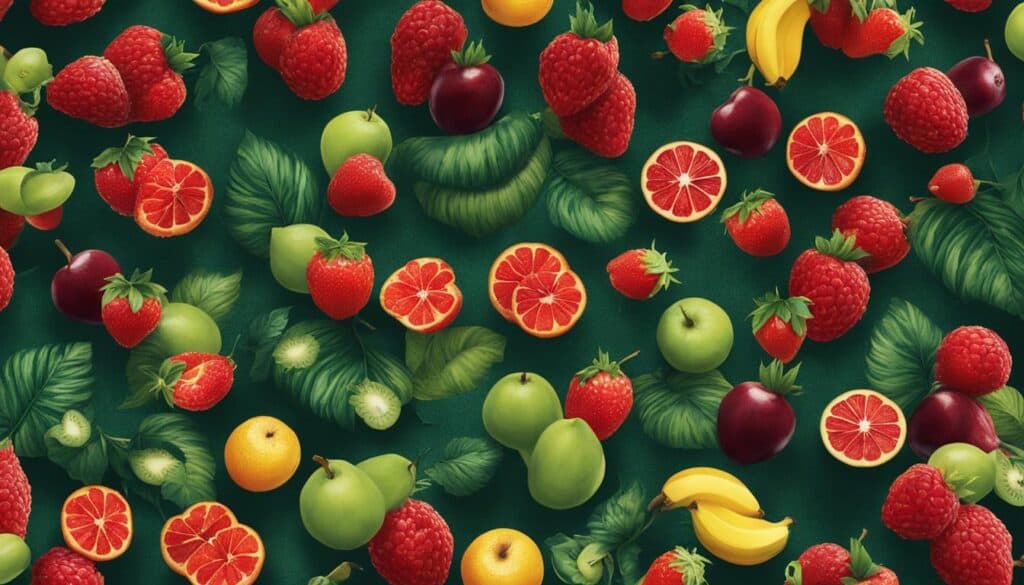
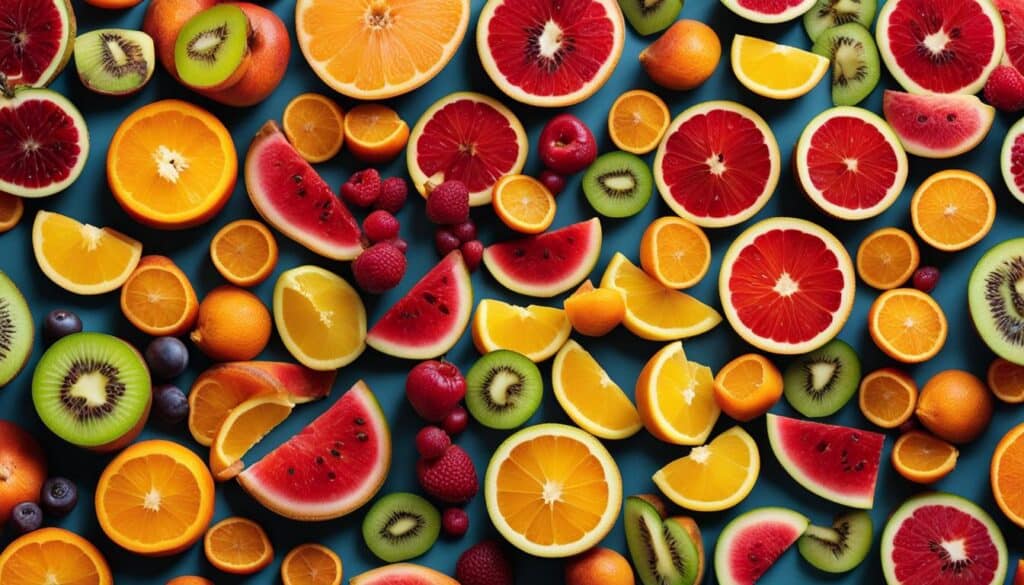
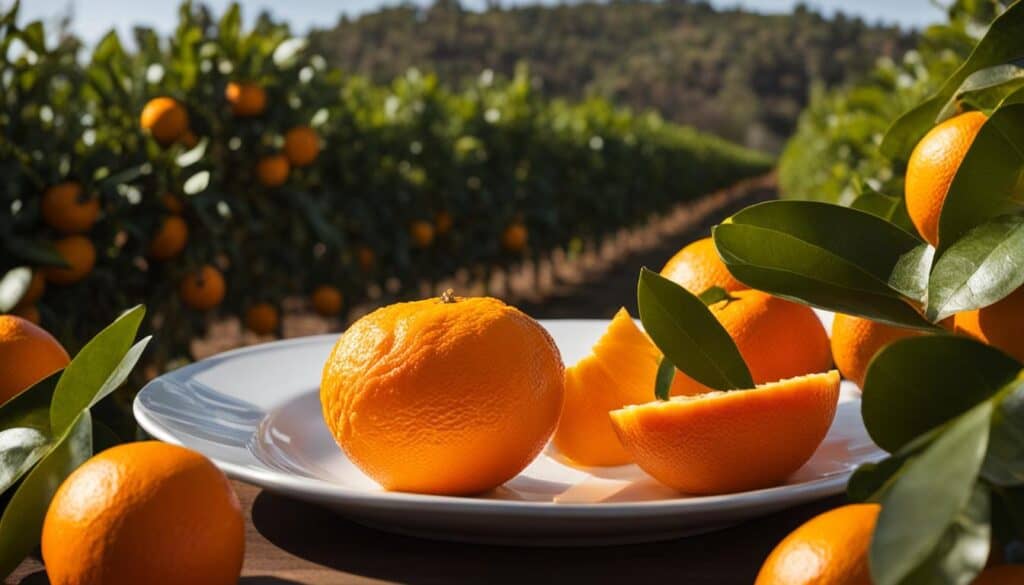
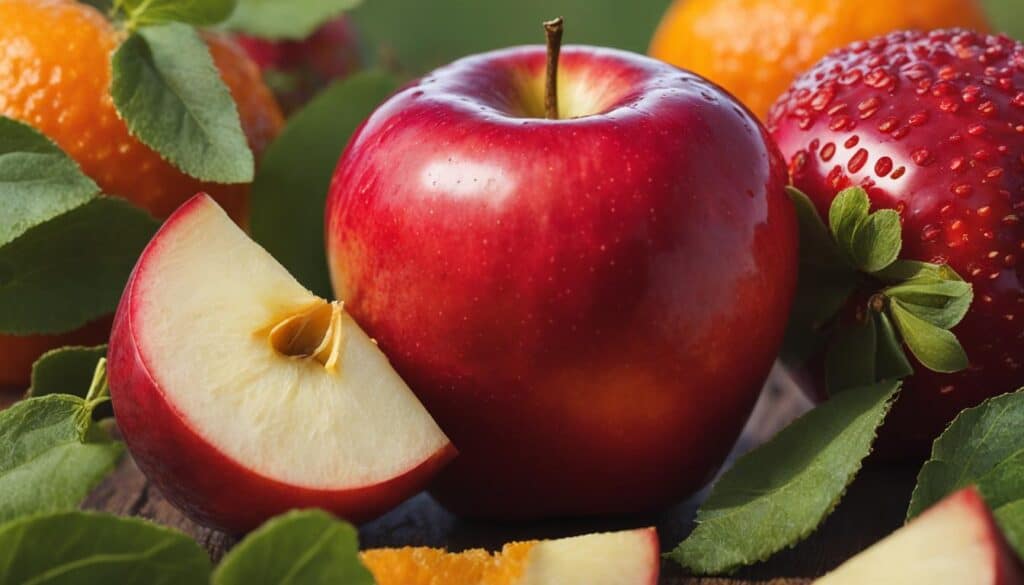
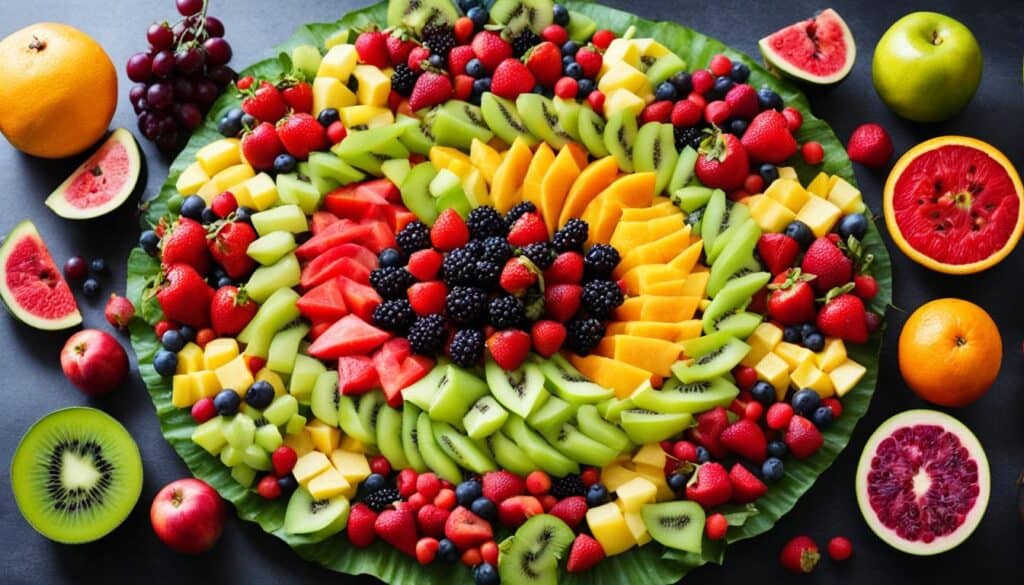



Leave a Reply